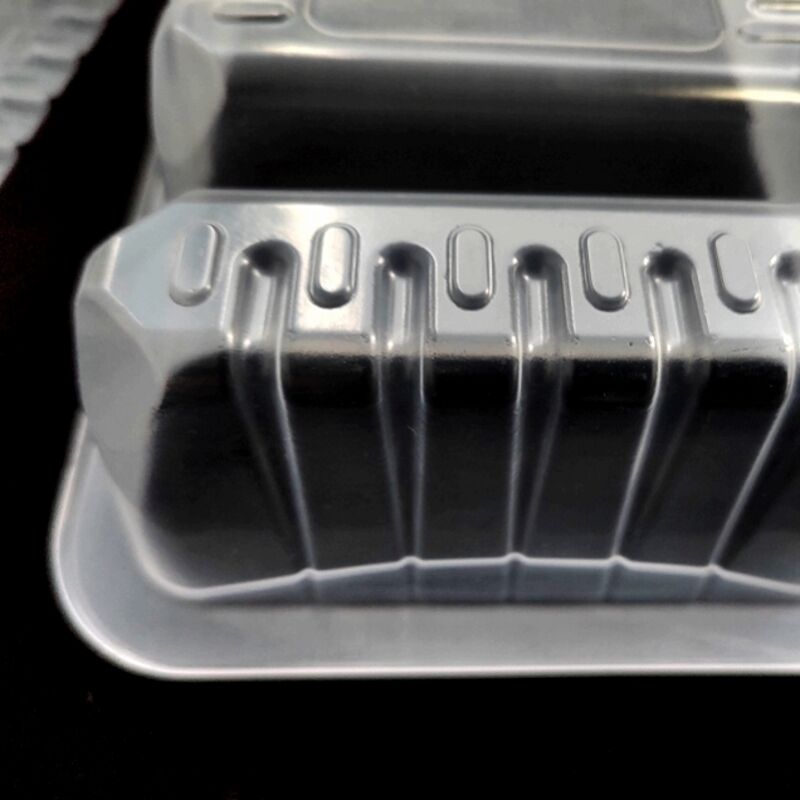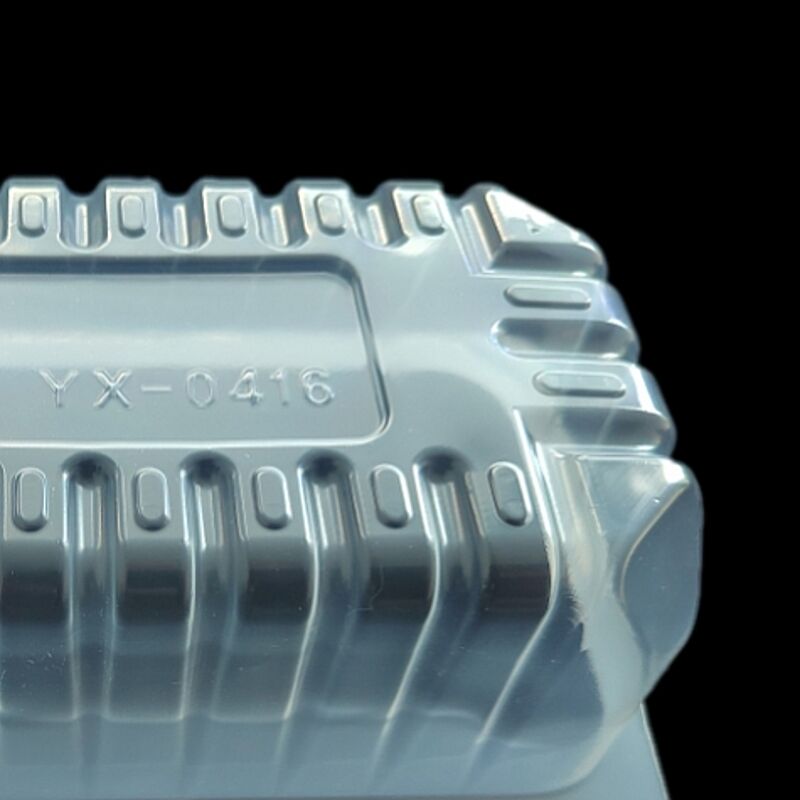What Makes a Plastic Tray Ideal for Meat Packaging?
Introduction to Plastic Tray in Meat Packaging
In the food industry, packaging is not merely a means of holding products but an essential system that ensures safety, preserves freshness, and enhances consumer appeal. Fresh meat presents specific challenges for packaging since it is highly perishable, releases natural juices, and is sensitive to contamination. To address these challenges, the Plastic Tray has become a dominant solution across supermarkets, butcher shops, and distribution chains. Its functionality, durability, and compatibility with modern preservation techniques make it a preferred choice for meat processors and retailers.
This article examines what makes a Plastic Tray ideal for meat packaging, considering factors such as food safety, shelf life extension, material properties, sustainability, and consumer convenience. By understanding these elements, both manufacturers and retailers can make informed decisions about packaging solutions that meet industry requirements and consumer expectations.
The Role of Meat Packaging in the Food Industry
Ensuring Food Safety
Fresh meat is highly susceptible to bacterial contamination if not properly packaged. A Plastic Tray provides a hygienic enclosure that prevents direct exposure to external elements. Combined with sealed lidding films, the tray reduces the risk of cross-contamination during storage, handling, and transportation.
Extending Shelf Life
Preserving freshness is a top priority in meat packaging. A Plastic Tray, when used with modified atmosphere packaging, can slow bacterial growth and oxidation, thereby extending the shelf life of meat. This not only improves product quality but also reduces food waste and enhances supply chain efficiency.
Enhancing Consumer Appeal
Appearance is a decisive factor in consumer purchasing behavior. A clear, well-designed Plastic Tray allows customers to see the freshness of the meat, which builds trust and encourages sales. Clean, leak-proof packaging also improves the overall shopping experience by minimizing unpleasant handling.
Key Characteristics of an Ideal Plastic Tray
Strength and Durability
Meat products require packaging that can withstand handling, stacking, and transportation without collapsing or leaking. A Plastic Tray offers rigidity and impact resistance, ensuring the product remains intact from processing facilities to retail shelves.
Leak-Proof Design
Fresh meat releases natural juices known as purge. If not properly contained, these fluids can create hygiene risks and reduce product appeal. Modern Plastic Tray designs incorporate deep cavities, absorbent pads, or integrated leak-proof features to prevent spillage.

Compatibility with Sealing Systems
Heat-sealable rims allow trays to be paired with lidding films, creating an airtight seal that preserves freshness and prevents leakage. A Plastic Tray must be designed with consistent flange dimensions to ensure compatibility with sealing machinery.
Food-Grade Materials
Plastic trays are manufactured from food-grade polymers such as PET, PP, and PS. PET is widely favored for its clarity, recyclability, and strength, while PP offers heat resistance and durability. These materials are specifically chosen to comply with strict food safety standards.
Versatility in Sizes and Formats
Different cuts of meat require different tray dimensions. Plastic trays can be customized in depth, shape, and size to accommodate steaks, poultry, ground meat, or bulk packaging. This versatility ensures that every product type can be packaged efficiently.
Benefits of Using Plastic Tray for Meat Packaging
Preservation of Freshness
By maintaining a controlled environment, plastic trays help retain meat’s natural color, flavor, and texture. Modified atmosphere technology used alongside trays reduces oxygen exposure, slowing spoilage.
Improved Hygiene Standards
A tightly sealed Plastic Tray prevents direct contact between meat juices and external surfaces, reducing contamination risks in retail and domestic environments.
Enhanced Branding Opportunities
The flat backing and transparent design of trays create opportunities for brand labeling, product information, and promotional messaging. Attractive packaging enhances brand visibility and consumer trust.
Efficiency in Supply Chains
Plastic trays are lightweight, stackable, and compatible with automated packaging lines. This improves efficiency in transportation, storage, and retail display.
Consumer Convenience
Shoppers prefer packaging that is easy to handle, hygienic, and resealable in some cases. A well-designed Plastic Tray offers ease of use and fits neatly into household refrigerators, enhancing consumer satisfaction.
Sustainability Considerations in Plastic Trays
Recyclability
As environmental awareness grows, manufacturers are shifting to recyclable PET or mono-material trays that are easier to process in recycling systems. This allows businesses to meet sustainability goals without compromising performance.
Reduced Material Usage
Innovations in tray design aim to reduce plastic usage by creating thinner but stronger trays. Lightweighting reduces material consumption and transportation costs, lowering the environmental footprint.
Eco-Friendly Alternatives
Some producers are experimenting with biodegradable plastics and hybrid designs that combine plastic with paperboard. These innovations aim to maintain leak-proof performance while improving environmental responsibility.
Applications of Plastic Trays in Meat Packaging
Retail Packaging
Supermarkets widely use plastic trays for beef, poultry, pork, and lamb. Their transparent design showcases product freshness while ensuring safety.
Food Service and Distribution
In bulk packaging for restaurants, hotels, and catering services, Plastic Tray solutions provide hygiene and ease of portioning.
Export Markets
For long-distance shipping, high-barrier trays combined with modified atmosphere technology ensure meat remains fresh and secure until it reaches international destinations.
Challenges of Using Plastic Trays
Environmental Concerns
Plastic packaging has faced criticism due to its impact on waste streams. While recyclable and eco-friendly solutions exist, widespread implementation is still a challenge in many markets.
Cost Considerations
High-quality trays with advanced leak-proof and barrier properties may cost more than basic packaging options. Companies must balance cost efficiency with performance and sustainability.
Machinery Compatibility
Trays must align with sealing equipment to ensure airtight seals. Mismatches can compromise performance and create operational inefficiencies.
Future Trends in Meat Packaging with Plastic Trays
The future of Plastic Tray use in meat packaging will likely focus on sustainability, consumer convenience, and technological integration. Smart packaging solutions, such as freshness indicators and antimicrobial coatings, are being explored. The move toward fully recyclable and compostable trays will also shape the industry as consumer demand for eco-friendly products increases.
Conclusion
A Plastic Tray is an ideal solution for meat packaging due to its strength, leak-proof properties, food-grade materials, and compatibility with sealing systems. It preserves freshness, ensures hygiene, enhances consumer appeal, and improves supply chain efficiency. While challenges such as cost and environmental impact exist, innovations in recyclable and sustainable designs are making plastic trays even more viable for the future. By selecting the right material, design, and sealing technology, businesses can maximize the effectiveness of meat packaging and meet both industry standards and consumer expectations.
FAQ
Why is a Plastic Tray commonly used for meat packaging?
Because it provides durability, hygiene, leak-proof performance, and visual appeal that meet both retailer and consumer needs.
What materials are typically used to make a Plastic Tray for meat?
PET, PP, and PS are the most common, with PET being favored for its clarity and recyclability.
How do Plastic Trays help extend the shelf life of meat?
They are often used with sealing films and modified atmosphere packaging to reduce oxygen exposure and slow microbial growth.
Are Plastic Trays recyclable?
Yes, many trays made of PET or mono-material designs are recyclable, but recycling availability depends on local facilities.
Do Plastic Trays prevent leakage of meat juices?
Yes, modern trays are designed with leak-proof structures and may include absorbent pads to manage purge effectively.
Are Plastic Trays cost-effective compared to other packaging?
While advanced trays may have higher upfront costs, they reduce food waste, improve consumer satisfaction, and increase sales.
Can Plastic Trays be used for all types of meat?
Yes, they can be designed for beef, pork, lamb, poultry, and even processed meat products in various portion sizes.
How do Plastic Trays support branding?
They allow clear visibility of products while offering space for labels, logos, and product information.
What are the main challenges with Plastic Trays?
Environmental concerns and the need for recycling solutions are the biggest challenges facing plastic trays.
What innovations are shaping the future of Plastic Trays?
Recyclable mono-material trays, biodegradable plastics, and smart packaging technologies are leading the next wave of innovation.
Table of Contents
- What Makes a Plastic Tray Ideal for Meat Packaging?
- Introduction to Plastic Tray in Meat Packaging
- The Role of Meat Packaging in the Food Industry
- Key Characteristics of an Ideal Plastic Tray
- Benefits of Using Plastic Tray for Meat Packaging
- Sustainability Considerations in Plastic Trays
- Applications of Plastic Trays in Meat Packaging
- Challenges of Using Plastic Trays
- Future Trends in Meat Packaging with Plastic Trays
- Conclusion
-
FAQ
- Why is a Plastic Tray commonly used for meat packaging?
- What materials are typically used to make a Plastic Tray for meat?
- How do Plastic Trays help extend the shelf life of meat?
- Are Plastic Trays recyclable?
- Do Plastic Trays prevent leakage of meat juices?
- Are Plastic Trays cost-effective compared to other packaging?
- Can Plastic Trays be used for all types of meat?
- How do Plastic Trays support branding?
- What are the main challenges with Plastic Trays?
- What innovations are shaping the future of Plastic Trays?

